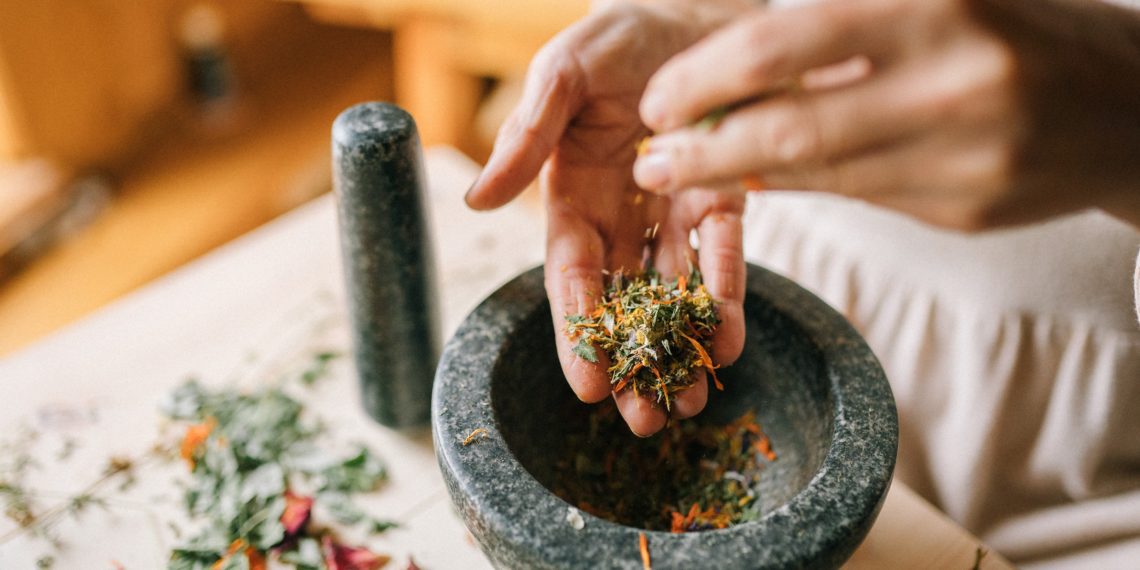For ages, Moroccan herbs, spices, and plants have been utilized as medicines, and many of the old-fashioned treatments are still in use today to treat a wide range of illnesses. Moroccan herbs, spices, and plants offer a natural and efficient way to cure a number of health conditions, from the anti-inflammatory effects of turmeric and argan oil to the digestive characteristics of cumin and ginger. In this post, we’ll look at some of the most popular Moroccan herbs and spices and how they’re utilized in traditional Moroccan medicine to learn more about their medical properties.
Cumin is one of the spices most frequently utilized in Moroccan medicine. A spice recognized for its digestive benefits, cumin has a long history of usage as medicine in Morocco. It can be consumed as a tea or used as a spice in cuisine and is frequently used to cure upset stomachs and indigestion. Along with aiding digestion, cumin is said to have anti-inflammatory properties and has been used to treat a number of conditions, such as asthma, eczema, and arthritis. Cumin is a multipurpose spice that is widely available in Moroccan markets and drugstores and is frequently used in Moroccan cuisine.
Moroccan cuisine frequently uses the spice turmeric, which has a distinct flavor and a vivid yellow appearance. It has also been demonstrated to be useful in lowering pain and inflammation in the body and is well known for its potent anti-inflammatory qualities. It can be consumed as a spice or taken as a pill to treat arthritis and other inflammatory diseases. Turmeric is thought to have a variety of other health advantages, including as antioxidant capabilities and the capacity to enhance cognitive function. It is a common component in many traditional Moroccan treatments and is available in many Moroccan markets and pharmacies.
There are several Moroccan plants that are used medicinally in addition to spices. Argan oil is made from one of the most often utilized plants. Argan oil, which is obtained from the argan tree’s kernels and is high in fatty acids, antioxidants, and vitamin E, It is organically applied as a nourishing, all-natural treatment for hair and skin. Argan oil is frequently used to help lessen the appearance of fine lines and wrinkles since it is believed to have anti-aging qualities. Additionally, it can assist to hydrate and soften the skin, and it is occasionally used to treat skin diseases including eczema and psoriasis. Argan oil is frequently used as a hair treatment to help nourish and shield the hair from harm in addition to its benefits for skin care. By making the hair smoother, shinier, and less prone to tangles and broken ends, it is thought to help enhance the health and look of the hair.
Aloe vera is another Moroccan plant that is frequently used. It is a shrub with North African roots that is frequently seen in Moroccan medicines and cosmetics. Sunburns, wounds, and other skin irritations are frequently treated with aloe vera because of its well-known soothing and healing abilities. Aloe vera plants have a gel-like fluid that is abundant in vitamins, minerals, and amino acids and is believed to have anti-inflammatory and antibacterial qualities. Due to its capacity to nourish and moisturize the skin, aloe vera is frequently used in skin care products. It is also occasionally employed in the treatment of eczema, acne, and other skin disorders. Aloe vera is sometimes eaten orally as a dietary supplement in addition to its benefits for skin care because it is thought to provide a number of health advantages.
Moroccan mint, also known as “Nana” mint, is a variety of mint that is indigenous to Morocco and is frequently used in traditional Moroccan food and medicine. Moroccan mint is frequently used to brew tea and is also used to foods as a garnish or flavor enhancer. It has a distinct, energizing flavor. Moroccan mint is frequently used to aid with digestion, ease motion sickness, and reduce inflammation since it is believed to have a range of health benefits in Moroccan traditional medicine. Moroccan mint is thought to have a relaxing effect on the body and mind, hence it is occasionally used as a natural headache cure. Moroccan mint is commonly used in skin and hair care products in addition to its therapeutic benefits since it is regarded to have nourishing and rejuvenating qualities.
Another plant that is frequently utilized in Moroccan medicines and cosmetics is olive oil. Olive oil is made from the fruit of the olive tree and is full of vitamins, healthy fats, and antioxidants. Considered to offer anti-aging and anti-inflammatory effects, it is frequently used as a natural moisturizer for the skin and hair. Olive oil is frequently applied to the skin and hair to nourish and protect them, as well as to enhance their overall health and beauty. Because it is thought to provide a number of health benefits when consumed, olive oil is occasionally taken orally as a dietary supplement in Moroccan traditional medicine. Additionally, some people use olive oil as a home cure for a number of conditions like high blood pressure and constipation.
It is true that Moroccan herbs and spices have long been used in traditional medicine in that nation, and they continue to play a big role in Moroccan culture today. Moroccan plants, spices, and herbs are widely used to treat a variety of illnesses because they are believed to have a wide range of therapeutic properties. Olive oil, Moroccan mint, argan oil, and aloe vera are some of the herbs and spices that are most frequently used in Moroccan cooking. These plants are said to have anti-inflammatory, anti-aging, and other therapeutic properties. They are frequently employed to hydrate and shield the hair and skin. Moroccan plants, spices, and herbs are also occasionally taken orally as homeopathic remedies or dietary supplements for a variety of illnesses.





